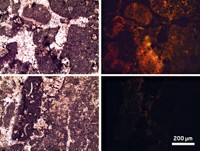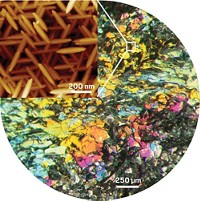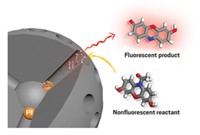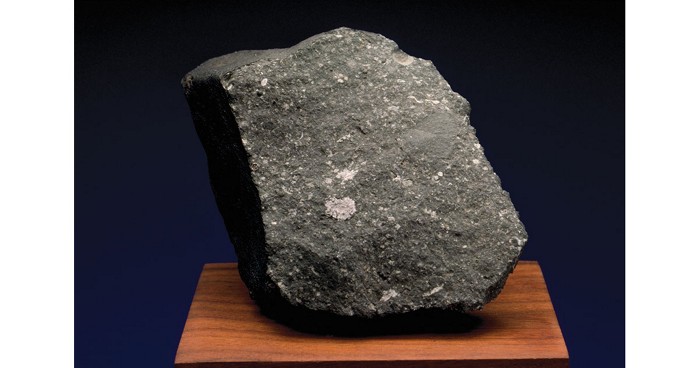Advertisement
Grab your lab coat. Let's get started
Welcome!
Welcome!
Create an account below to get 6 C&EN articles per month, receive newsletters and more - all free.
It seems this is your first time logging in online. Please enter the following information to continue.
As an ACS member you automatically get access to this site. All we need is few more details to create your reading experience.
Not you? Sign in with a different account.
Not you? Sign in with a different account.
ERROR 1
ERROR 1
ERROR 2
ERROR 2
ERROR 2
ERROR 2
ERROR 2
Password and Confirm password must match.
If you have an ACS member number, please enter it here so we can link this account to your membership. (optional)
ERROR 2
ACS values your privacy. By submitting your information, you are gaining access to C&EN and subscribing to our weekly newsletter. We use the information you provide to make your reading experience better, and we will never sell your data to third party members.
Geochemistry
Fluorescent nanoparticles light up rocks’ pores
A simple method reveals porosity of geological materials
by Lakshmi Supriya, special to C&EN
November 4, 2019

Rocks may seem solid and heavy. But in fact, they are chock full of tiny holes. A team of researchers has developed a simple, robust method for studying the pores in rocks using magnetic, fluorescent nanoparticles (ACS Earth and Space Chem. 2019, DOI: 10.1021/acsearthspacechem.9b00071).
Understanding the physical structure of rocks is important in petroleum engineering and for understanding carbon dioxide sequestration, groundwater flow, and the use of rocks as building materials. One of the simplest distinguishing features of rocks is their porosity, which is generally measured by determining the amount of gas the holes in the rock can absorb. However, getting a handle on other key properties, such as how the pores are connected, requires complicated, indirect measures, says Na Li of the Chengdu University of Technology and an author of the new study.
Previously, Li and team forced magnetic nanoparticles coated with fluorescent dye into porous rocks (Anal. Chem. 2017, DOI: 10.1021/acs.analchem.7b03794). Under the microscope, the pores stood out clearly against the dark rock mass, and the dye lit up the interconnected pore structure. But the nanoparticles’ fluorescence was weak under common optical microscopes, and the fluorescent nanoparticles were not very stable.
To improve this, the team attached the dye, rhodamine B, to particles more strongly by covalently linking it to silica-coated Fe3O4 magnetic nanoparticles with silane molecules. The team then impregnated rock samples about 30 µm thick with the fluorescent nanoparticles by pulling them through the samples with a strong magnetic field.
Rock samples impregnated with the nanoparticles showed stronger fluorescence than samples loaded with nanoparticles that had been only physically coated with dye. These nanoparticles also did not leak dye when immersed in water for long times.
The size of the particles that can enter a given rock’s pores is directly related to the size of the pores and pore junctions within, Li says. To quantify the size of these pores, the team made nanoparticles of sizes ranging from 65 to 120 nm, which had different peak fluorescence wavelengths, and observed which ones could penetrate different rock samples. Seeing which particles enter the pores provides a simple way for researchers to measure the sizes of the pores and pore junctions.
The method is “absolutely important, more so for petroleum geologists,” said Soumyajit Mukherjee, a structural geologist at the Indian Institute of Technology Bombay. According to Li, the fluorescent marker could be used in applications such as aquifer characterization, tomographic reservoir imaging, and measuring oil well characteristics such as temperature, pressure, and fluid flow.
Li and team have tested the method on carbonates, shales, and sandstones, and plan to test it on volcanic rocks. In the future, they would like to combine their fluorescent markers with computed tomography imaging to get 3-D information of rock structure.






Join the conversation
Contact the reporter
Submit a Letter to the Editor for publication
Engage with us on Twitter